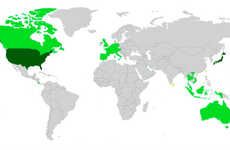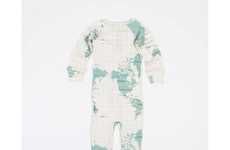
Interactive Charts Plot the World's Largest Breasts and Genitals
Erin Kirkpatrick — April 3, 2011 — Naughty
References: geekinheels & brobible
With these interactive charts, you can see the chestiest and most well-endowed countries in the world. The U.S. boasts a voluptuous, mostly D-cup population; Russia, Brazil and Scandinavian countries are similarly busty. On the opposite end of the spectrum, China, Bolivia and Tanzania are reppin' the mosquito bites.
Never fear, men -- you aren't excluded from these naughty comparative maps. The Congo has the largest penis size on average at 17.93 cm, while the smallest average size is found in South Korea at 9.66 cm. At 14.68 cm, Canada outshines the U.S., who don't seem to measure up at 13.48 cm.
Does size really matter? Interestingly enough, when comparing these maps, the countries with breast sizes that are larger than the global average also have penis sizes that are smaller than the global average.
Never fear, men -- you aren't excluded from these naughty comparative maps. The Congo has the largest penis size on average at 17.93 cm, while the smallest average size is found in South Korea at 9.66 cm. At 14.68 cm, Canada outshines the U.S., who don't seem to measure up at 13.48 cm.
Does size really matter? Interestingly enough, when comparing these maps, the countries with breast sizes that are larger than the global average also have penis sizes that are smaller than the global average.
Trend Themes
1. Interactive Comparative Body Charts - Technology-assisted tools which can visually compare body measurements to emphasize varying cultural differences.
2. Body Size Data Analytics - Big data analysis of body size measurement trends to draw insights and conclusions among varying populations.
3. Body Image Discrimination Awareness - An increased awareness of how varying body shapes and sizes are subject to discrimination and stigmatization, and an emphasis on diversity and inclusion.
Industry Implications
1. Healthcare - Leveraging big data analytics to understand obesity and related medical conditions in populations for better treatment outcomes.
2. Fashion - Customized garment design for people of varying shapes and sizes who are subject to body image discrimination.
3. Education - Incorporating diverse body types in the school curriculum and awareness campaigns to reduce body shaming and promote inclusivity.
5.2
Score
Popularity
Activity
Freshness























